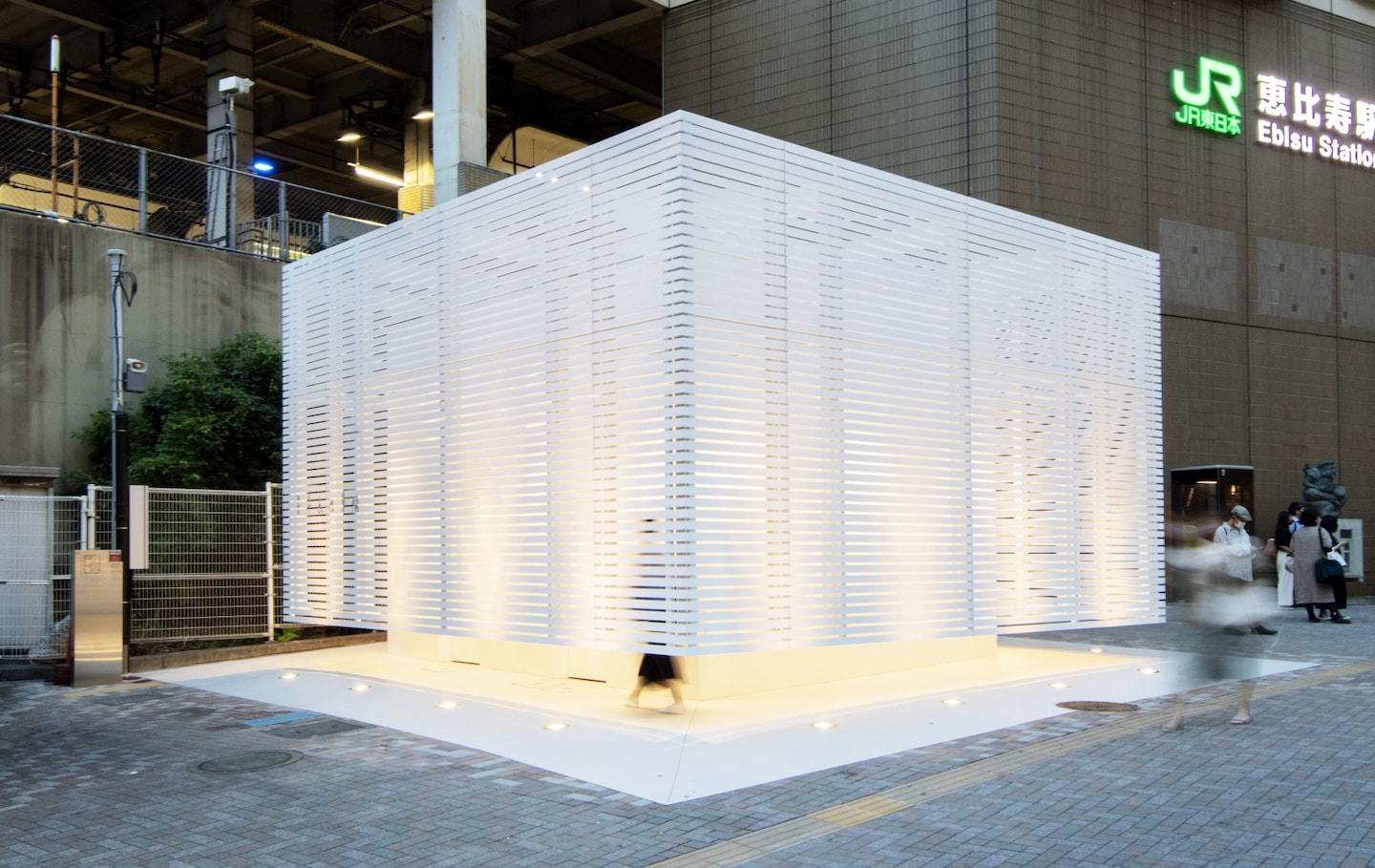Toilet Wonders of the Architectural World
One of the quirky things about contemporary Japanese culture is the modern toilet; how clean, futuristic, and warm they are. A group of renowned Japanese architects decided to take it one step further. They've designed 17 stunning toilets in the Shibuya area--a kind of art installation for the common man called "The Tokyo Toilet."
By Robert KodamaThe Tokyo Toilet
Despite being renowned for having some of the cleanest and most modernistic toilets in the world, many Japanese residents are hesitant to use public toilets for the association with dirt and foul smells. The notion of them being unsafe is also quite strong. Collaborating with Shibuya Ward, The Tokyo Toilet project drew together 16 renowned architects to redesign 17 toilets across the area. The project is meant to dispel the hesitancy to use these toilets and attract users by making them architecturally unique.
Shibuya Ward is known for driving Japan towards a more equitable and diverse society. (It was the first ward in the country to recognize same-sex marriage.) While this toilet project may seem like just another eccentric aspect of Japanese culture, it goes much deeper than that. The design is partly meant to ensure that these toilets are as accessible to everyone, regardless of age, gender, or disability.
Nanago Dori Park by Kazoo Sato/Disruption Team Lab
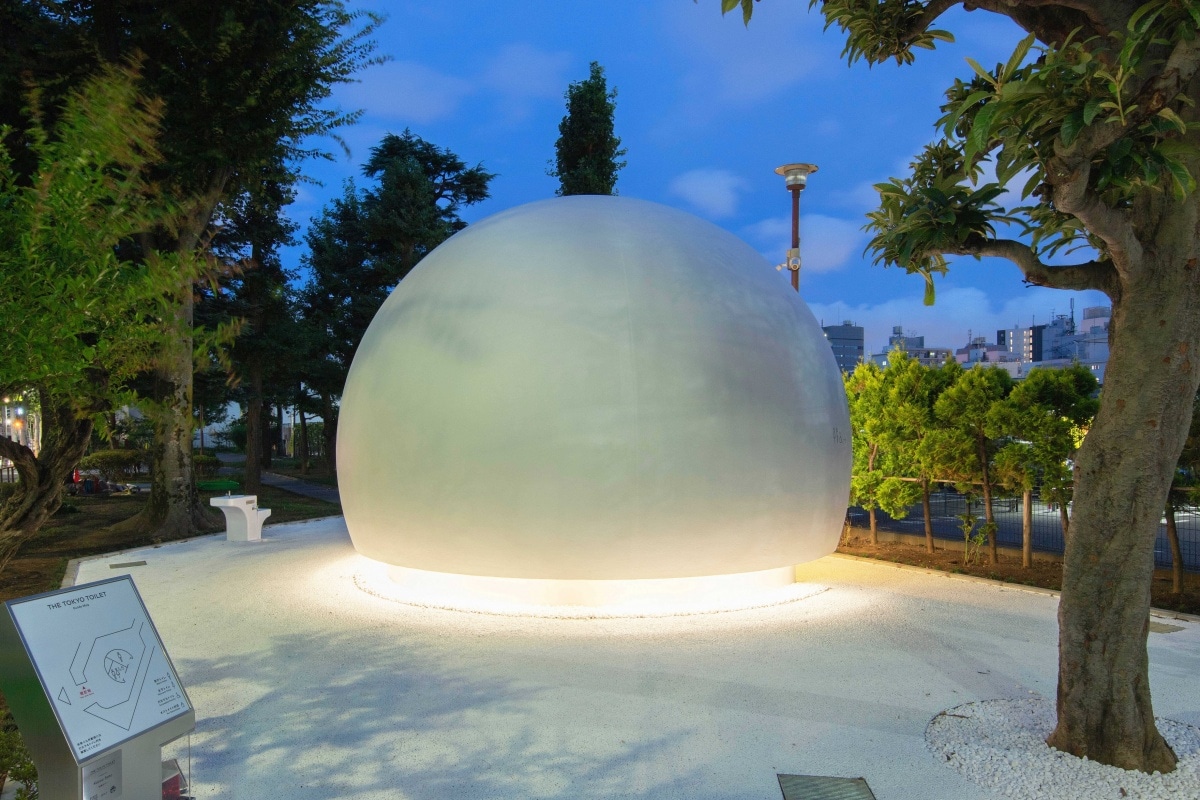
The concept for this entry, dubbed "Hi Toilet," was to create a fully contactless toilet that can be operated purely by voice commands. After some extensive research, Kazoo Sato discovered that there were behavioural patterns across Europe and the US, that people attempted to stay hygienic by avoiding contact with parts of the public toilet, whether it be the door or the toilet seat. The architect's hope is to provide an even cleaner experience that moves past the "dirty" stigma of public toilets.
Sato is known for his work across different mediums, from design to promotional work. He also received numerous awards for his work and has served as a judge at the Cannes Film Festival.
photo by Satoshi Nagare, courtesy of The Nippon Foundation
Google Maps Link
Yoyogi-Hachiman by Toyo Ito
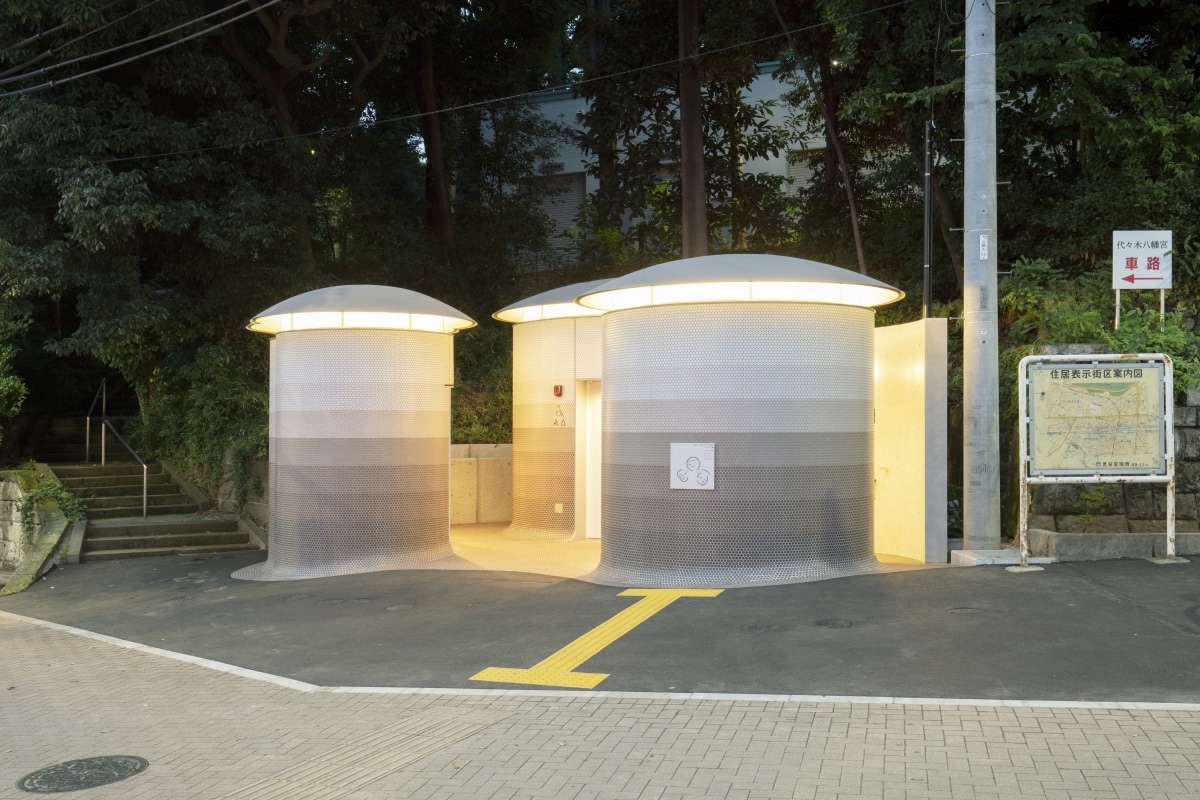
Visually, these toilets represent three mushrooms sprouting from the ground. Despite its location alongside a busy street, their placement at the base of a staircase leading to the Yoyogi-Hachiman Shrine allows visitors to view them as fungi sprouting in harmony with the forest backdrop in the heart of Tokyo.
Toyo Ito has designed buildings across the globe, including notable locations such as TOD's Omotesando Building in Tokyo and the Taichung Metropolitan Opera House in Taiwan. He has also received a number of awards for his architectural designs across Europe and in Japan.
photo by Satoshi Nagare, courtesy of The Nippon Foundation
Google Maps Link
Ebisu Station, West Exit by Kashiwa Sato

This toilet is located at the busy Ebisu Station right beside a police box. Its location encourages users to feel confident in its safety whilst the design promotes ease of use and cleanliness.
Kashiwa Sato has numerous notable works to his name, including working with UNIQLO, the Fuji Kindergarten, and the Cup Ramen Museum.
photo by Satoshi Nagare, courtesy of The Nippon Foundation
Google Maps Link
Nabeshima Shoto Park by Kengo Kuma
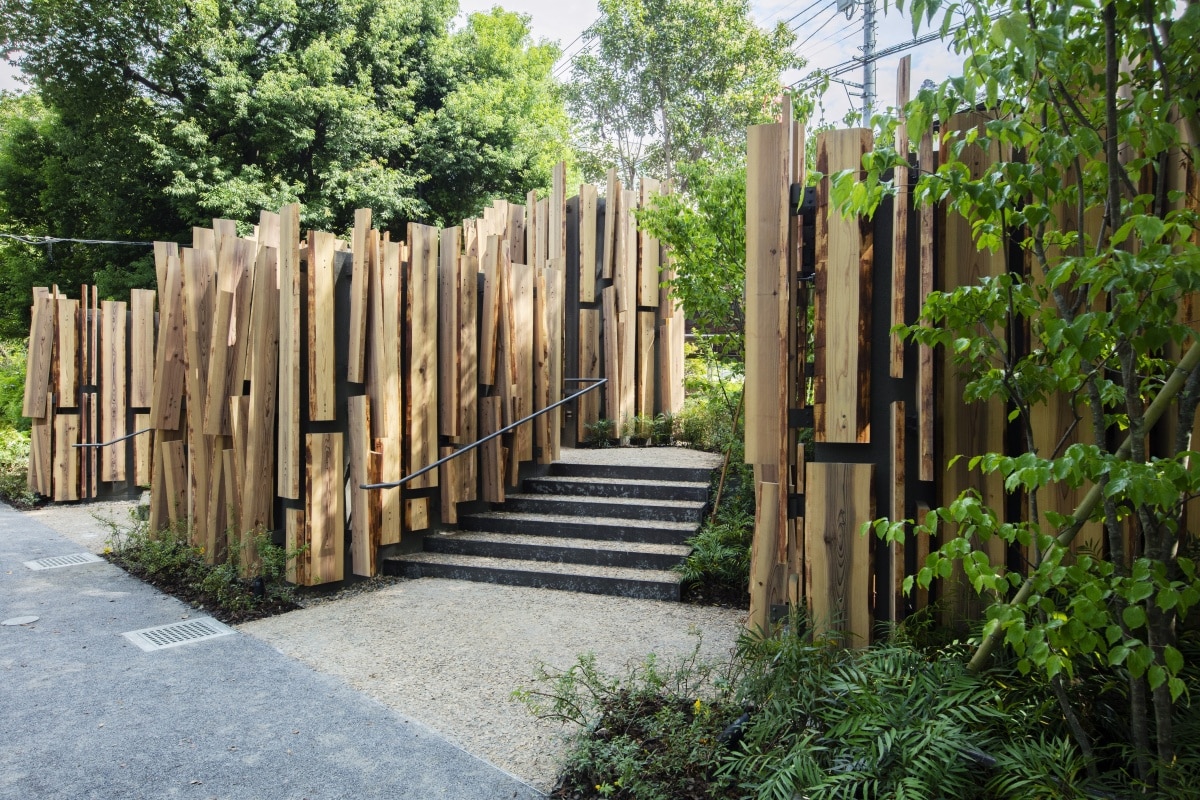
This toilet design takes users back to nature by immersing them in a walk through the woods. Each of the five huts is covered in cedarwood planks at random angles, giving the impression of natural scenery. The hut represents a village in the woods with facilities that accommodate a diverse range of needs.
Kengo Kuma focuses on work that merges with local environments and regularly uses natural materials in his design. He has received related awards such as the Spirit of Nature Wood Architecture Award in Finland and the International Stone Architecture Award in Italy. He is currently a Distinguished Professor and Professor Emeritus at the University of Tokyo.
photo by Satoshi Nagare, courtesy of The Nippon Foundation
Google Maps Link
Jingumae by NIGO®

At first glance one might think this is just another simple house that has withstood the test of time in an otherwise modern and bustling area of Tokyo. If this was your first thought, the architect may have done their job properly. The design is based on a former housing complex called the Washington Heights Dependent Housing that was built by the US in what is now Yoyogi Park. The rustic exterior and the American-style facade should invoke the feeling of cosiness and invitation. The retro nature of this toilet is also based on the concept of learning from the past by preserving disappearing designs. It is meant to communicate how places like this have made the architect the person he is today.
NIGO®'s main focus is street culture, establishing designer collections for large brands such as Louis Vuitton and Addidas. He is also active in the American music industry, having recently signed with Universal Music.
photo by Satoshi Nagare, courtesy of The Nippon Foundation
Google Maps Link
Jingu-Dori Park by Tadao Ando
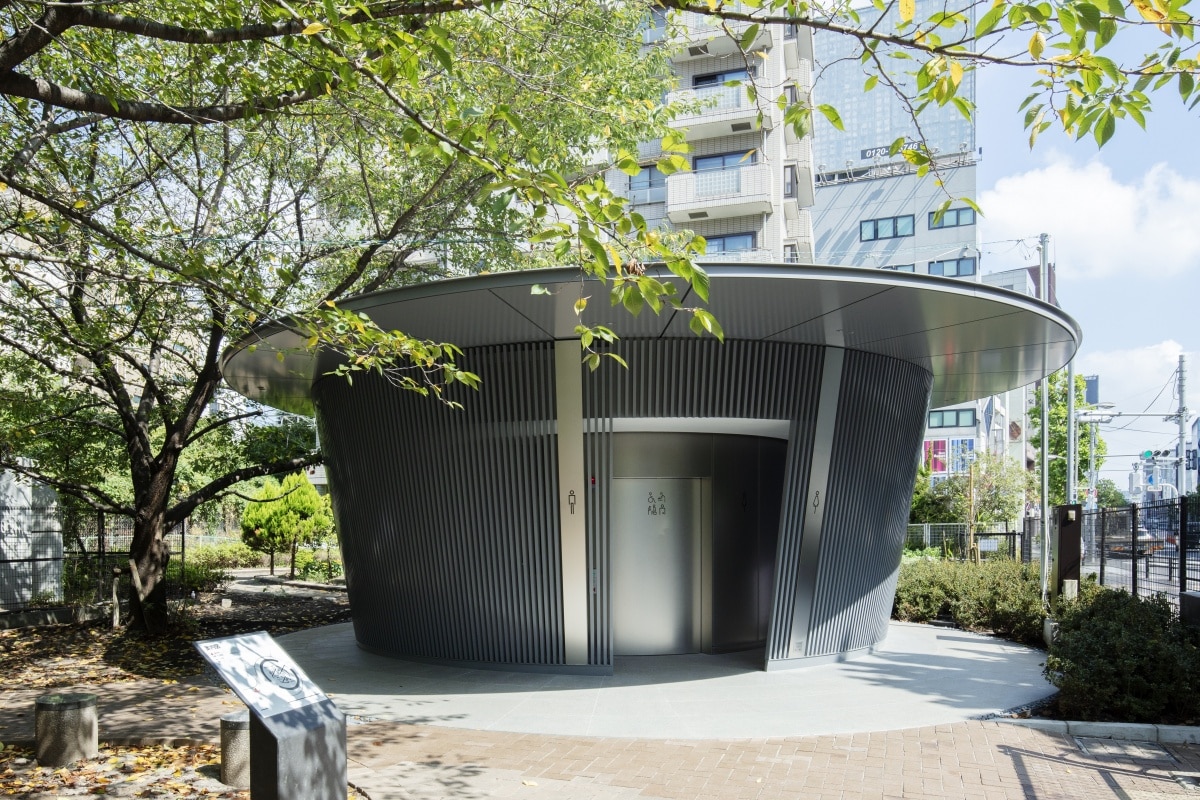
Designed to be a meaningful public space in an urban landscape, the toilet makes use of a small space to create a comfortable and safe space for users. The cylindrical wall is designed to allow light and air to pass through, creating a pleasant atmosphere.
Born in Osaka, Tadao Ando is one of the most prolific Japanese architects. Notable works include the Church of the Light (Osaka), Pulitzer Arts Foundation (St Louis, Missouri), and Chichu Art Museum (Naoshima). His designs typically use manipulations of his signature large concrete walls alongside natural elements. He is the recipient of numerous global awards and has been a Professor Emeritus of the University of Tokyo since 2003.
photo by Satoshi Nagare, courtesy of The Nippon Foundation
Google Maps Link
Nishihara Itchome Park by Takenosuke Sakakura
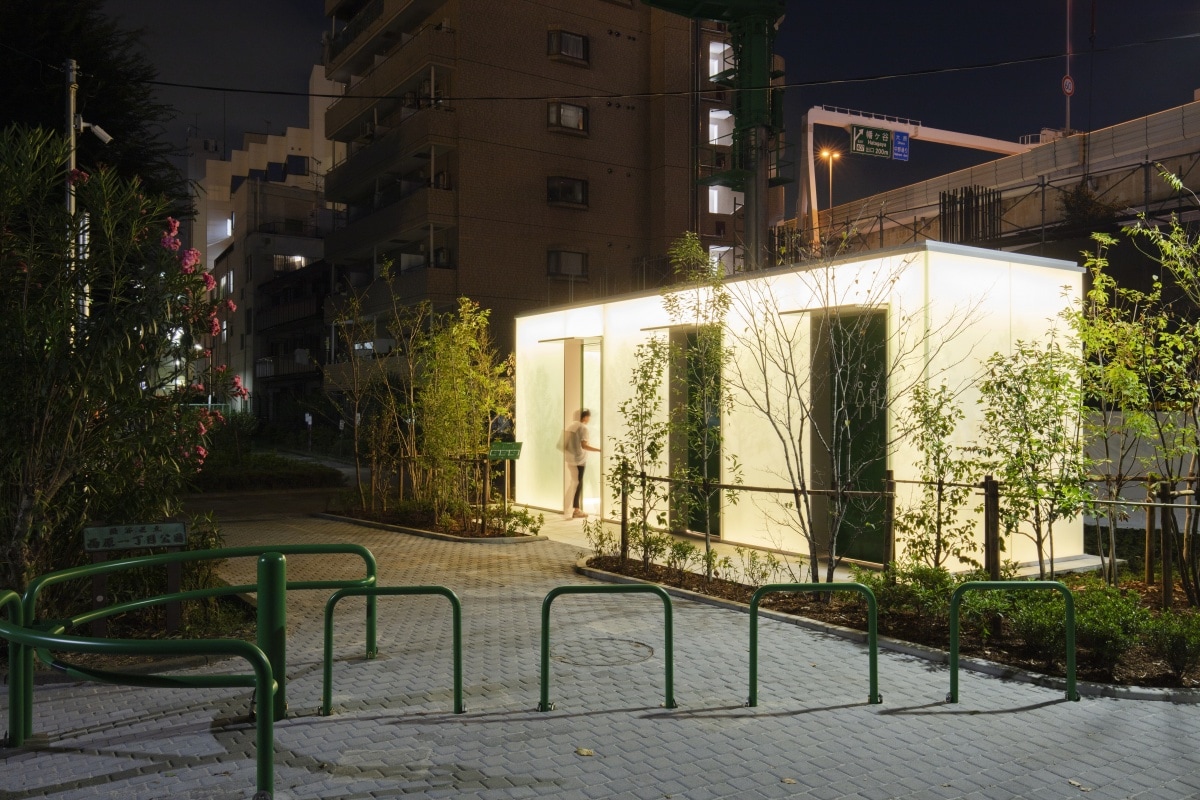
The area in which this toilet is located was previously an uninviting, dark location. The former toilet was rarely used, so it was important to revamp both the area and toilet by designing a more welcoming space. The toilet illuminates the area at night to counter the previously negative sentiments towards the space, basing its concept on a lantern.
Takenosuke Sakakura is currently serving as a Chairman of the Board of Directors at Sakakura Associates and has numerous major works across Japan including Gallery Saka and the residential building in Tokyo Midtown.
photo by Satoshi Nagare, courtesy of The Nippon Foundation
Google Maps Link
Ebisu East Park by Fumihiko Maki
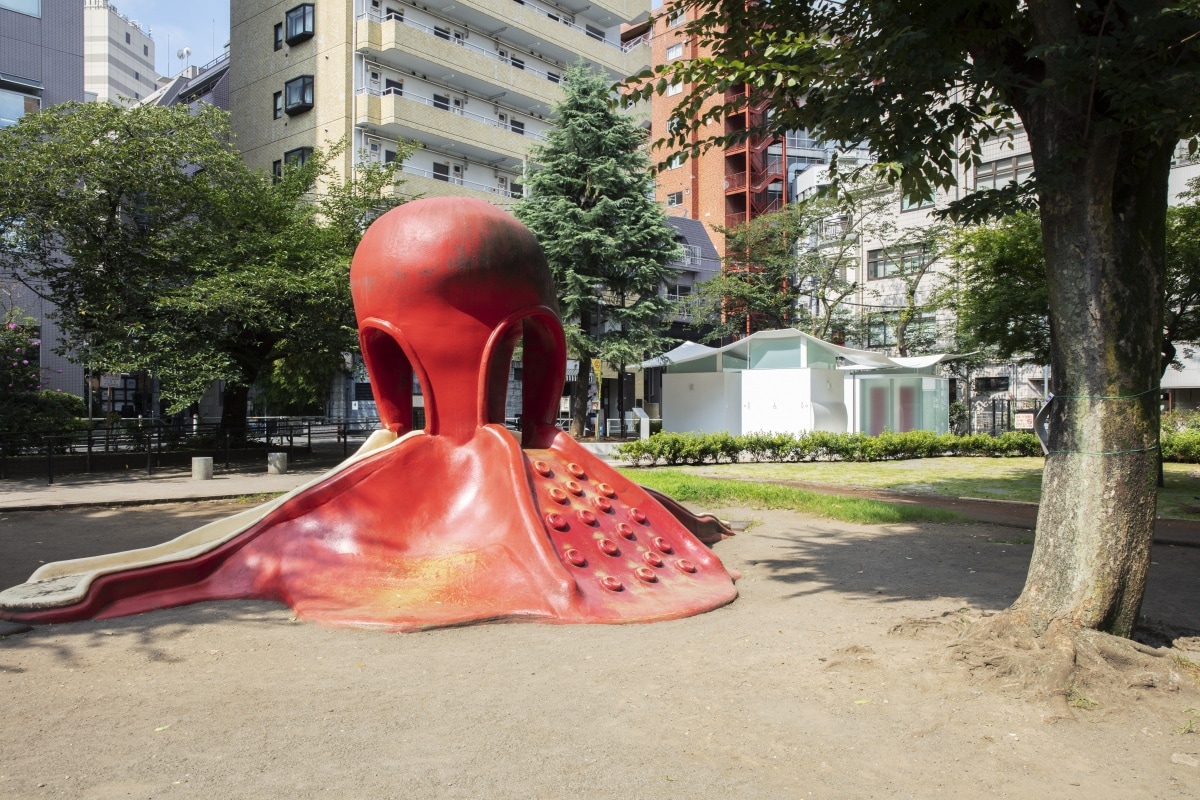
Dubbed the "Squid Toilet," the toilet was designed to blend into a local park featuring a prominent octopus as a main playground feature. As a lot of children frequent the area, it was imperative that the design ensures the facility is a comfortable and safe area with good sightlines. The roof is designed to let good ventilation and natural light into the toilets, promoting a clean space for users.
Fumihiko Maki spent the majority of his early years working in the US as an architect; he was associate professor at the University of Washington and Harvard University before returning to Japan in 1965. He has also won numerous awards throughout his career.
photo by Satoshi Nagare, courtesy of The Nippon Foundation
Google Maps Link
Higashi Sanchome by Nao Tamura
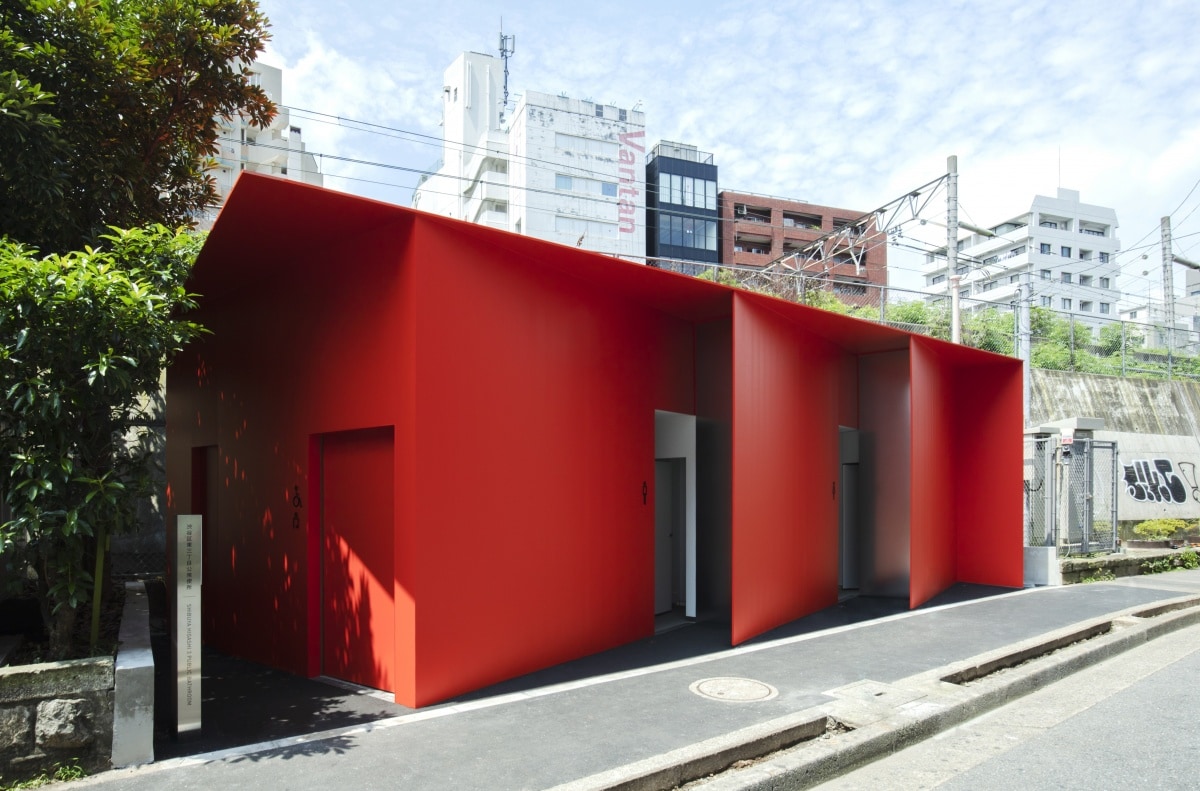
Origata is a traditional method of decorative wrapping that was the inspiration for the design of this toilet. Acting as a symbol of gift-giving, it communicates the hospitality of the area towards a diverse group of people. Inspired by the LGBTQ+ community in New York, the toilet aims to address the basic physical needs of all people to use accessible facilities.
Nao Tamura is the recipient of numerous awards across the US and Europe for her works that transcend culture, languages, and disciplines.
photo by SS Co.,Ltd. Hojo Hiroko, courtesy of The Nippon Foundation
Google Maps Link
Ebisu Park by Masamichi Katayama / Wonderwall®︎
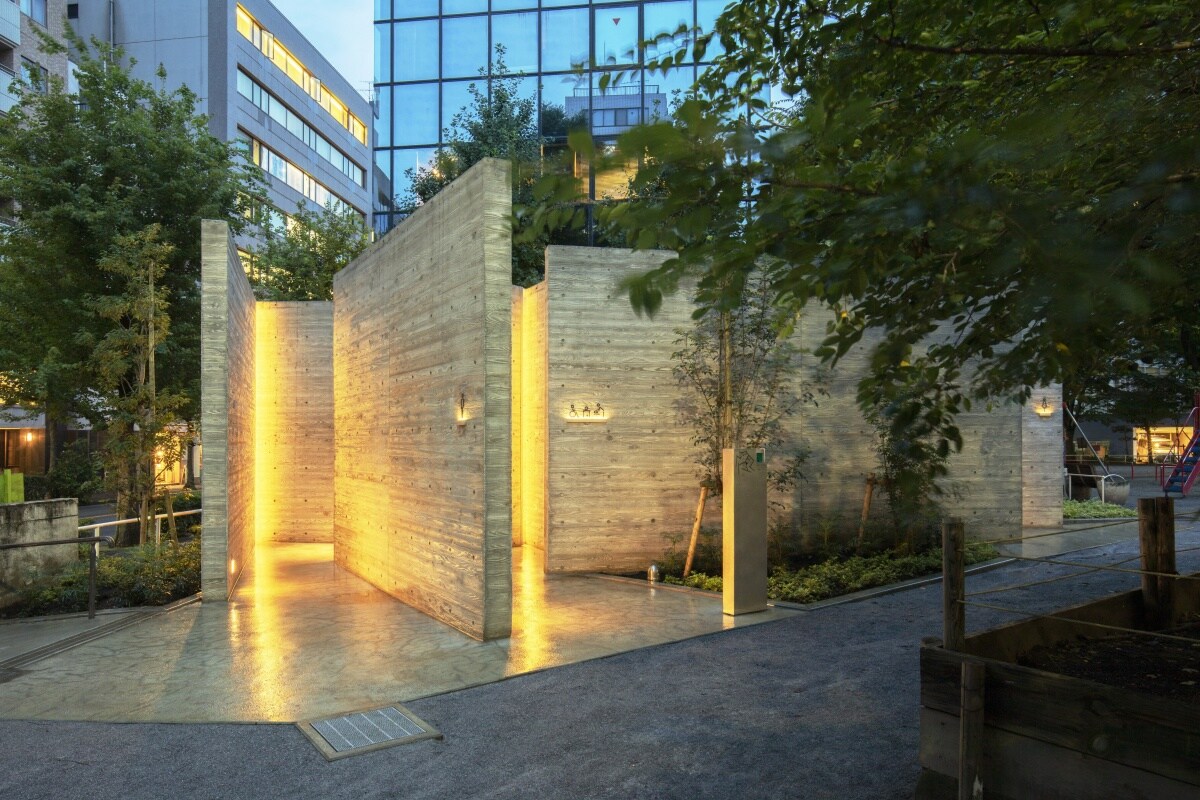
This toilet has been named "Modern Kawaya", the Japanese term describing a hut "ya" standing over a river "kawa." Kawaya were the origin of toilets in Japan dating back to the Jomon period (10,000 to 6,000 BCE). Based on this inspiration, the overall design was to create an object of 15 randomly placed concrete walls . The idea was to blend into the surroundings of the park as would any other objects one might typically find in a similar location, devoid of typically architectural concepts.
Masamichi Katayama's notable works include flagship stores across the globe for UNIQLO and more recently Japan House London in the UK.
photo by Satoshi Nagare, courtesy of The Nippon Foundation
Google Maps Link
Yoyogi Fukamachi Park and Haru-no-Ogawa Community Park by Shigeru Ban
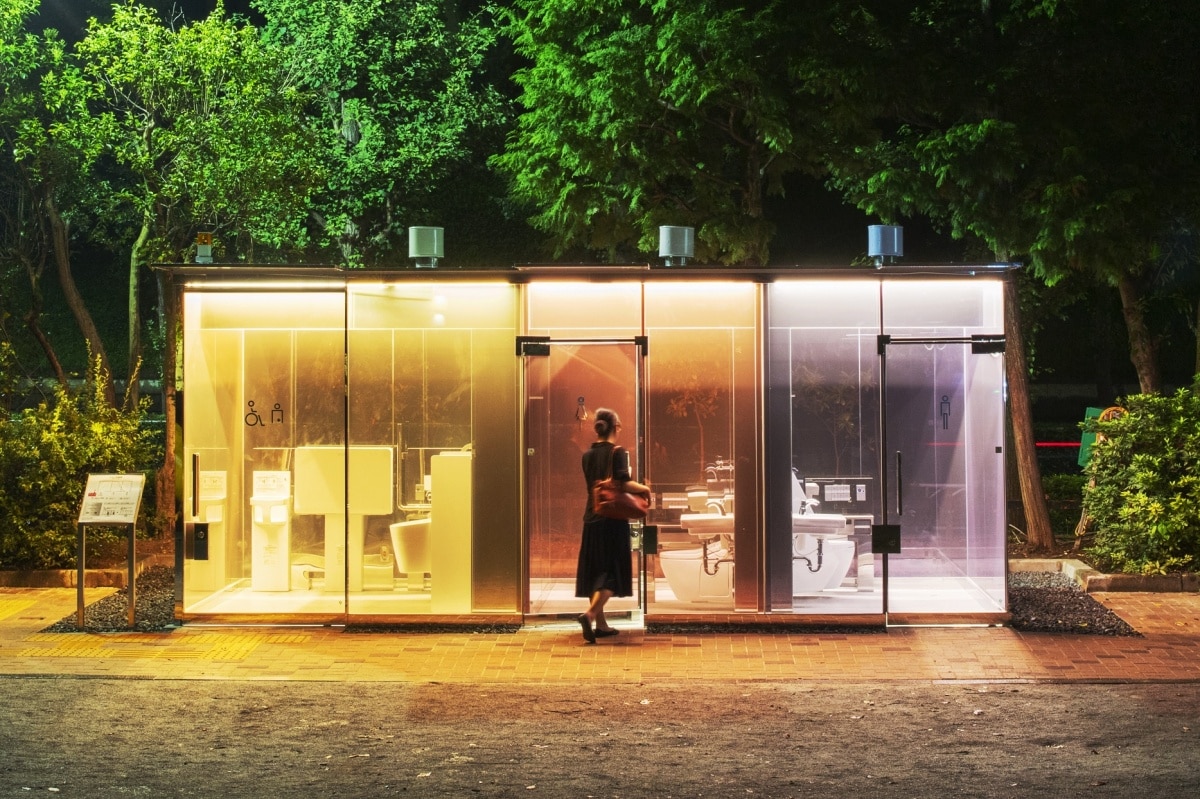
Both of these toilets have been designed so potential users can see right through the walls. The idea was to counter concerns about their cleanliness and whether they are currently occupied. Once the user enters the toilet and locks the door, the walls turn opaque, blocking the view through the glass. The colorful windows offer an artistic touch to the toilets, complimenting the area in which they are located.
Shigeru Ban's main works focus on designing houses and museums; he is also actively involved in disaster relief work. He is the recipient of numerous awards, including the highly revered Pritzker Prize.
photo by Satoshi Nagare, courtesy of The Nippon Foundation
Google Maps Link (Yoyogi Fukamachi Park)
Google Maps Link (Haru-no-Ogawa Community Park)
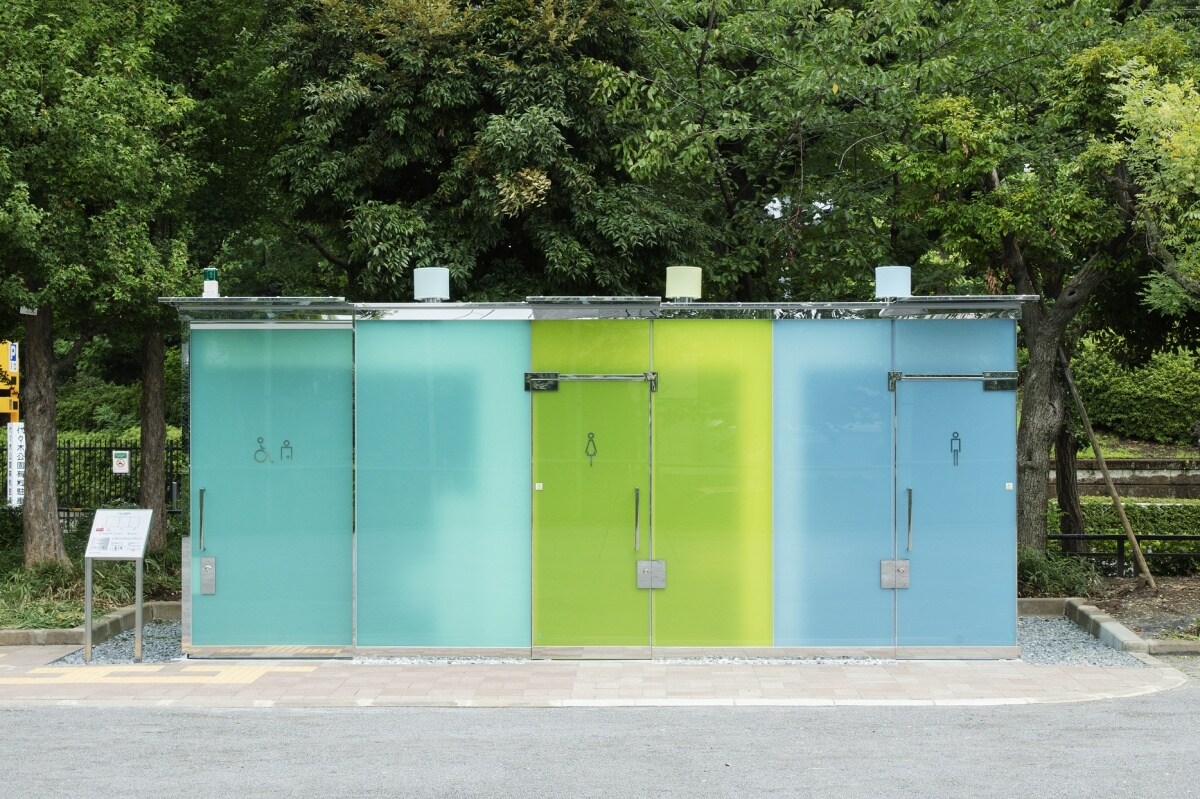
photo by Satoshi Nagare, courtesy of The Nippon Foundation


